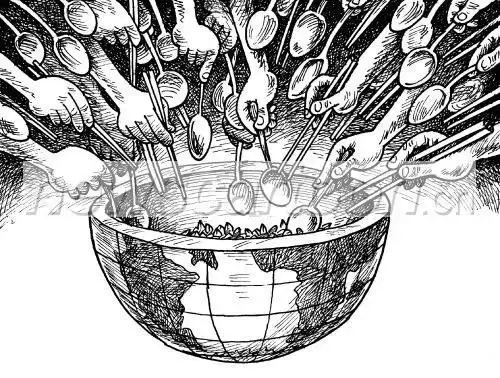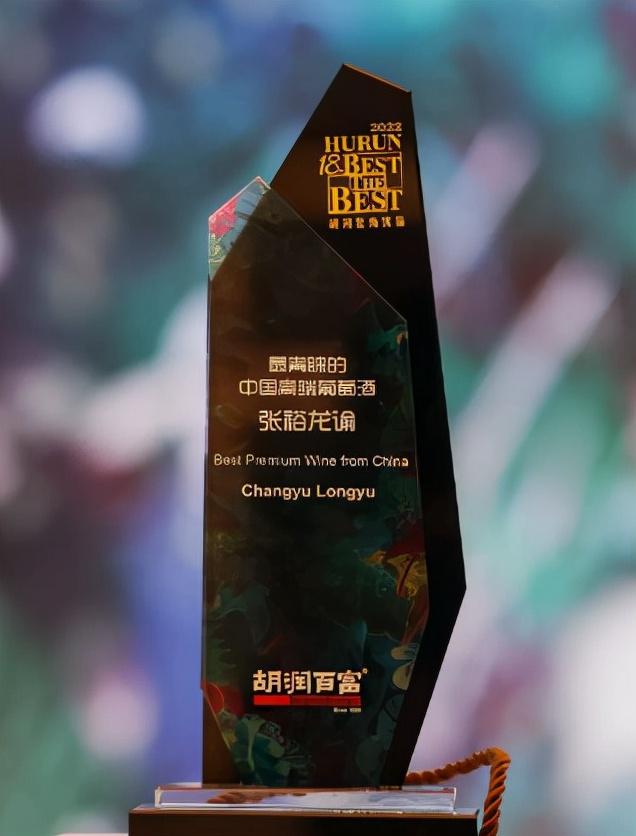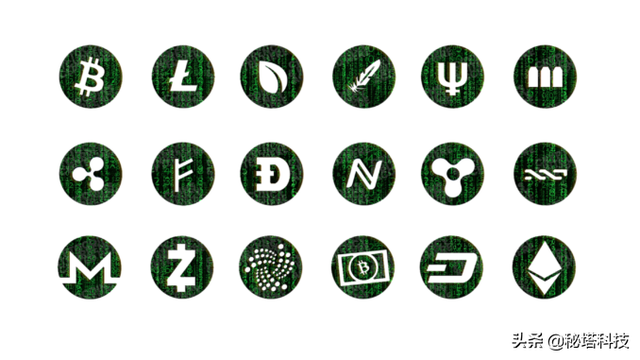民以食为天 众缺食为难 No Grain, Big Pain
Asia's Rice Crisis
亚洲大米危机
No Grain, Big Pain
民以食为天 众缺食为难
By PETER RITTER
作者:彼得·瑞特

Women line up to buy rice in Dhaka, Bangladesh
在孟加拉国的达卡,妇女们排队等候买米
At around 5 p.m. on April 2, local police and officers from the Philippines National Bureau of Investigation descended on a four-story warehouse in suburban Manila. They were acting on a tip-off about possible illicit activity. But the agents weren't searching for drugs or knockoff Rolexes. They were looking for rice. The inspection was part of a nationwide effort to nab profiteers who, taking advantage of sky-high prices for Asia's most basic food, are suspected of repackaging government-subsidized rice and reselling it at higher market rates. Officers have had some success, discovering 27,000 bags of rice at one warehouse, according to Rex Estoperez, spokesman for the Philippines National Food Authority (NFA), which distributes subsidized grain. "Another warehouse was caught in possession of many, many [empty] NFA sacks," says Estoperez. "So where did the rice go?"
在收到涉嫌非法交易活动的密报后,菲律宾当地警方和国家调查局官员在4月2日下午5点左右对马尼拉郊区一个四层楼高的仓库展开突袭。不过,他们不是搜查毒品或冒牌劳力士,而是大米。此次检查只是全国各地开展打击非法交易者的一个缩影。非法交易者正利用亚洲最重要主食的高昂价格伺机作崇,涉嫌重新装配政府补助的大米,再以高价转售。菲律宾全国食物局(NFA)负责分发补贴谷物。该局发言人Rex Estoperez表示,官员们取得了一些成功,在一个仓库中搜查到27,000袋大米。“在另一仓库查到很多,很多印有NFA字样的空袋子”,Estoperez反问,“大米那里去了?”

That's a question millions of Asians are asking. Across the region, the price of food, from wheat to pork, is increasing at dizzying rates. But it is rice, the foundation of Asia's diet and a potent symbol of its cultures,that is causing the most anxiety. In Thailand, Vietnam, Bangladesh, India, Pakistan and elsewhere, the price of rice has doubled in the past year, a hike that hurts all the more because Asian families often spend half of their weekly budget on food, more than double what Western households spend. In an effort to contain spiraling domestic prices, major rice producers, including India and Vietnam, have sharply curbed exports — disrupting global supply chains, fueling more inflation, and prompting rice hoarding and panic-induced shortages. Asia is experiencing one of the uglier aspects of globalization: as countries have become increasingly reliant on one another for vital products, they have also become more vulnerable to external shortages and price spikes as they ripple around the world.
这正是成千上万亚洲民众想要了解的。在整个亚洲地区,从小麦到猪肉,食物的价格在以令人眩晕的速度飞涨。作为亚洲民众赖以生存的主食和亚洲文化一个强有力标志,大米引发的问题实在令人担忧。在泰国,越南,孟加拉国,印度,巴基斯坦和其他地区,大米的价格在去年增加了一倍,米价的飞涨对民众的伤害还有更为深远的地方,亚洲家庭在食物上的花费经常要占他们每周开支的一半,是西方家庭开支的一倍还多。为抑制国内连锁反应的市场价格,包括印度和越南在内的大米主要生产国已开始大力限制出口——这进一步扰乱了全球供应链,助长了更大规模的通货膨胀,促使了民众对大米的囤积,恐慌从而进一步引发了大米短缺。亚洲国家正在体验全球化带来的丑恶一面:当众多国家越来越倚赖某种赖以生存的产品时,尽管这些国家会向全球求助,但他们在国外产品短缺和国内价格飙升问题上往往会变得更为脆弱。
It's one thing if you can't find pork at your local market. You can always buy chicken. But rice has no good substitute in many Asian diets. In Mandarin, the word for rice is also the word for food. The Thai phrase "to eat" translates as "eat rice." "Rice isn't just another commodity," says Robert Zeigler, director general of the International Rice Research Institute in Manila. "In Asia, rice has cultural, social and, in many places, even a religious role, so it carries much more psychological weight." Indeed, Asian nations have reacted to the mere prospect of shortage with something close to hysteria. The Philippines government has threatened to charge rice hoarders with economic sabotage — a crime punishable by life imprisonment. In Manila last week, armed soldiers distributed cheap bags of rice from the backs of military trucks to residents queuing in the midday sun. In Thailand, the world's largest rice exporter, some stores are limiting sales to three bags per family to prevent shoppers from emptying shelves.
如果民众在当地市场买不到猪肉,这无须大惊小怪。民众尚可买鸡代替。但是大米在许多亚洲国家的饮食中却没有理想的替代品。在普通话中,“米”等同于“饭”。在泰语词组中,“吃饭”翻译为“吃米”。“大米不是仅仅是一类商品”,马尼拉国际水稻研究所的主管罗伯特•齐格勒(Robert Zeigler)说道,“在亚洲,大米有着文化内涵,社会意义,而在许多地方甚至扮演着宗教的角色,因此大米(短缺)会给人们带来更多的心理负担”。事实上,亚洲很多国家对大米短缺问题的反应近乎歇斯底里。菲律宾政府威胁将以经济破坏罪--可判处无期徒刑的罪行--起诉大米非法囤积者。在马尼拉,全副武装的士兵上周从军用卡车上向在午间烈日下排队的居民分发廉价大米。在世界上最大的稻米出口国泰国,有些商店正在限制每家只能购买三袋大米,以防商店无米可售。
Global Exposure
全球遭难

The world still grows plenty of rice, more than 420 million metric tons last year, according to the U.S. Department of Agriculture. But prices are spiking for several reasons: rising long-term demand in countries such as China and India, where millions of increasingly prosperous people are eating more; short-term supply shocks thanks to unusually cold weather and pest infestation in Vietnam, the world's second largest supplier of rice; and the diversion of a huge chunk of America's corn crop to ethanol production, which has boosted demand for other staples, including rice.
美国农业部表示,去年全球大米的产量仍然很高,超过4.2亿公吨。然而,当前价格的飞升有多种原因:多数国家对大米的长期需求日益强烈,例如中国和印度,成千上万的富裕人群消耗得越来越多;世界第二大米供应商越南出现极不寻常的极冷天气和虫灾问题给短期供应带来冲击;美国把农作物玉米转向生产乙醇产品,同样也加剧了对其他主食(包括大米)的需求。
But economic dynamics, as they play out in national markets, can be even more complicated. Take India, for example, where rice prices are rising fast, contributing to 7% inflation last month, the highest in more than three years. The country is not suffering from a classic case of tight supplies. National rice production this year should hit 94 million metric tons, up more than 2 million metric tons from last year and more than 20 million metric tons from 2003's crop, which was devastated by a bad monsoon. Nor have shortages hit a government-run rice-distribution program that helps feed India's poor. That program bought 20.6 million metric tons last year. This year, procurement, from both domestic growers and importers, is expected to rise to 25 million metric tons, according to Manoj Pandey, a senior government official. "It's not a question of low production or low procurement," says Pandey.
然而,经济动态,就向在国内市场上的表现一样,更是极为复杂。以印度为例,日益飞涨的米价在上月引发的通货膨胀率高达7%,是印度近3年多来的最高水平。不过,印度尚未遭受典型的通货紧缩问题。全国大米产量在今年应该可达到9400万公吨,比去年高出200多万公吨和比2003年(印度农作物遭到一场剧烈季风的破坏,产量不高)高出2000多万公吨。因此,短缺问题对政府管制的旨在帮助贫困人群的大米分发救济署并为产生多大影响。去年,印度分发救济署购买了2060万公吨大米。Manoj Pandey是印度政府的一位高级官员。他表示,今年,从国内米农和进口商的获取大米采购预计会上升到25百万公吨。他还说:“这不是低产出或者低采购方面的问题”。
What has changed is that, because of economic reform, the government has gradually eased its control over the rice trade during the past 15 years. India is now more open to the world — and more exposed to global price fluctuations. Farmers and traders across India are now selling to the highest bidder. That means a lot of Indian rice that was once sold domestically is instead sold abroad for higher prices — which in turn drives up domestic prices. The government, in an effort to keep as much rice as possible at home to quell inflation, has banned exports of nonbasmati rice and adjusted price controls to discourage exports of aromatic basmati rice. "In desperation, the government is trying to isolate the domestic market," says economist B.B. Bhattacharya, vice chancellor at New Delhi's Jawaharlal Nehru University.
由于经济改革,在过去15年,政府对大米贸易的逐步放松控制的政策已发生改变。印度现在对世界更加开放——更是受全球价格波动的影响。在印度,农民和商人现正把米卖给出价较高的买家。这意味销售到国内的印度大米被卖到海外,以获取更高的价格。反过来,这会更加提高国内米价。为尽可能地保存更多大米,抑制国内通货膨胀,政府已禁止出口非Basmati大米,同时,还对大米控制政策进行调整,以阻止印度香型basmati大米的出口。“在无计可施之时,政府正在极力孤立国内市场,”新德里贾瓦哈拉尔•尼赫鲁大学大学的副校长及经济学家B.B. Bhattacharya表示。
The problem is that intervention usually has unintended consequences. In theory, the export ban should ease prices in India because more rice should be available. But because the global price remains a benchmark, Indian rice traders are resistant to selling their stocks for much less than they would get on the international market. That means less rice on the domestic market and higher prices for Indians. As economist Swaminathan S. Anklesaria Aiyar wrote recently in the Times of India, cutting exports is a form of national hoarding: "Governments would like to believe that hoarding by traders is terrible, whereas hoarding by governments promotes the public interest. But the impact on prices is exactly the same. Indeed, when governments start to hoard food out of panic, the panic itself stokes further inflationary fears."
问题在于:采用市场干预的做法通常会产生非意料中的后果。理论上而言,出口禁令应该可以缓和印度国内价格,因为出口禁令能够使更多大米供应到国内。然而,一旦从全球价格这一基准来看,印度米商便会对以低于国际市场价销售自己存货的做法大加反对。这意味国内市场上大米将会更少和印度民众面临的米价将会更高。诚如经济学家Swaminathan S. Anklesaria Aiyar在《印度时报》撰文指出,削减出口是国内囤粮的一种形式:“政府将会认为米商比较可怕,政府囤粮才会真正保障公众利益。不过,政府囤粮对价格的影响则是完全相同。确实如此,在政府出于恐慌开始囤积粮食时,这一恐慌将会进一步助长人们对通胀的担忧。”
Bottom of the Food Chain
食物链的低谷

Of course, higher global prices hurt the poor most, and the impact is particularly heavy in countries such as Bangladesh and the Philippines, which are dependent on imported rice to feed their large populations. A November cyclone in Bangladesh ravaged the fall crop, destroying some 800,000 metric tons of rice and forcing the country to import an extra 2.4 million metric tons from India simply to stave off famine. In Vietnam, bad weather and pest outbreaks hurt harvests. In the Philippines, where some 68 million people live on less than $2 a day, the government recently urged restaurants to halve their portions of rice. Credit Suisse estimates a shortage could cost the Philippines up to 1% of GDP in 2008. Manila resident Evelyn Belo, who waited in line for an hour last week to get a 110-lb. (50 kg) bag to feed her family of five, is feeling the pain. "It's very hard to feed my family already, and now we're worried that the rice will run out. I've started cooking rice porridge to try and use less. Rice is very important to us: it is what we eat. Without [it] people will die." Food aid programs are suffering, too. Valerie Guarnieri, Philippines director for the U.N. World Food Program, which feeds about 1.1 million Filipinos, says rising prices mean her organization will have to spend about 60% of its $19 million budget on food, up from 45% last year. "It's going to have a huge impact on our operation," Guarnieri says.
当然,较高的全球粮价对贫苦民众的伤害最深,对依靠进口大米养活国内大量人口的国家(如孟加拉国和菲律宾)影响尤其巨大。在孟加拉国,11月份发生的暴风严重破坏了秋季农作物,破坏了约80万公吨大米的生产和迫使孟加拉国仅从印度就进口额外的240万公吨大米以缓解饥荒。在越南,恶劣的天气和虫灾的爆发严重损害了粮食收成。在菲律宾,政府最近敦促餐馆对供应的大米减半。然而,约6800万民众却在以每天少于2美元的开支去生活。瑞士信贷集团(Credit Suisse)估计,在2008年,大米短缺将促使菲律宾国家的开销占据国民生产总值的1%。上周,马尼拉居民Evelyn Belo排队等候1小时后,才获得50千克大米来养活自己的五口之家。现在,他是备受煎熬。“养家糊口现在已是非常困难,我们现在害怕用完了大米。我开始煮米粥来尝试和来用更少的米。米对我们非常重要:这是我们所赖以生存的。没有[它]人们将会饿死”。食品援助项目也正遭难。联合国世界粮食计划署驻菲律宾区的主任维莱莉•瓜涅里(Valerie Guarnieri)表示,粮价飞涨意味她们的组织机构在食物上的花费要约占1900万美元预算经费中的60%,而去年则是45%。瓜涅里还表示,“涨价对我们开展行动产生巨大影响”。目前,联合国世界粮食计划署正在向110万左右的菲律宾民众提供援助。
Asia's rice crisis isn't likely to ease soon, and may get worse due to ominous long-term trends. The Rice Institute's Zeigler says rice production is not keeping pace with demand from surging Asian populations. The U.S. Department of Agriculture estimates that worldwide rice consumption increased 0.9% last year, to nearly 424 million metric tons. Production increased less than 0.7%. "This has been coming on for several years now," Zeigler says, noting that global stocks are at their lowest point in decades. "We're consuming more than we've been producing. And as demand for rice continues to increase, we've seen productivity growth plateauing."
亚洲大米危机不可能很快得到缓和,鉴于不甚乐观的长远趋势,也许还有可能会加以恶化。水稻研究所的齐格勒对此表示大米产出赶不上亚洲飞快增长的人口的需求。美国农业部估计全球对大米的消耗量在去年增加了0.9%,接近4.24亿公吨,而大米产量的增加则要少于0.7%。齐格勒还指出,“这种情况在近几年还会持续”,特别值得注意的是,全球库存量达到数十年内的最低点。“我们所消耗的大米要远远多过我们所生产的大米。尽管人们对大米需求量的在持续增加,但我们看到大米产量的增长正趋于稳定”。
Zeigler blames a lack of investment in agriculture. In much of Asia, rice farming remains small-scale and inefficient. In Thailand, for example, average yields are less than half that of either Chinese or U.S. farms. At the same time, Asia's rapid urbanization has gobbled up fecund farmland. In Vietnam's Bac Ninh province, 12 miles (19 km) from downtown Hanoi, shimmering emerald paddy fields are now bisected by a four-lane highway. Not far from where rice farmer Nguyen Thi Lan stands weeding her fields in calf-deep muck, a Singapore-Vietnamese joint venture will soon build a 1,700-acre (700 hectare) industrial park and township, turning this rural area into a satellite city. Trang Hieu Dung, director of planning at Vietnam's Ministry of Agriculture and Rural Development, says that the country is losing about 99,000 acres (40,000 hectares) of rice paddies every year to construction of cities, highways and industrial zones. In Thailand, the amount of land under cultivation dropped by more than 13% between 1995 and 2005.
齐格勒还对在农业方面的投资不足大加指责。在亚洲大多数地区,稻米种植的规模较小,并且效率低下。例如,泰国农场的平均产量不到中国或者美国产量的50%。与此同时,亚洲快速的城市化已占用大量高产农田。在离河内市区19 公里远的越南北宁省,绿油油的稻田被一条四车道的高速公路分开。米农Nguyen Thi Lan正在牛粪遍地的地方除草。不久以后,一家新加坡越南合资企业将会在离其不远的地方修建一个工业园和小镇,占地高达1,700英亩(700公顷),致力把这片乡区打造一个卫星城。越南农业与农村发展部的主任Trang Hieu Dung表示,为建设城市、高速公路和工业区,越南每年正损失大约9.9万英亩(40,000公顷)的稻田。从1995年到2005年,泰国耕地面积的减少已超过了13%。
The Race for Rice
大米之争

Some governments are not taking a long-term view, however. In a game of beggar-thy-neighbor, they're trying to keep inflation at home from soaring out of control. Vietnam recently imposed export quotas to maintain domestic supplies, which reduces the international inventory and drives up the global price. China has also imposed strict limits on exports to restrain domestic prices. In the Philippines, meanwhile, President Gloria Macapagal Arroyo personally negotiated a guarantee of 1.5 million metric tons of rice from Vietnam.
然而,有些政府并不立足长远,运用以邻为壑的对策,设法使国内高涨的通货膨胀率处于控制之中。在越南,最近实施出口配额制来确保国内粮食供应的举措减少了国际库存,并抬高了全球价格。同样,中国也对粮食出口加以严格限制,以抑制国内粮价。与此同时,在菲律宾,阿罗月亲自参与谈判,以确保从越南获取150万公吨的大米。

But even if Asia manages to keep its own rice bowl full, high prices and shortages may still filter down to the world's poorest countries. To put the problem in perspective, the Philippines, which faces the most acute rice shortage in Asia, imports just 15% of its rice; many countries in sub-Saharan Africa import up to 40%. Tight world supplies create a zero-sum calculus: Vietnamese rice going to the Philippines is rice that is unavailable for Africa — or for the NGOs that feed the world's most vulnerable populations. "A lot of people don't realize that Africa's rice depends on Asia's surpluses," says the Rice Institute's Zeigler. In other words, Asia's grain is Africa's loss. With Asian nations scrambling to protect their own supplies, that could mean a much hungrier world.
即使亚洲能够保持本区粮食自给,但粮食高价和短缺问题也许会波及世界最为贫穷的国家。从长远来看,面临着最严重大米短缺问题的菲律宾需要进口的大米占国内的15%; 在撒哈拉以南的非洲,许多国家进口的比例要高达40%。世界粮食供应的紧缺造成了输赢积累相等的微积分问题:越南把大米出口到菲律宾,就不能再向非洲供应——或者向非政府组织供应,尽管非政府组织在向全球岌岌可危的人口提供大米援助。“很多人民没意识到非洲国家获取的大米要取决于亚洲粮食的盈余”,国际水稻研究所的齐格勒说道。换句话说,亚洲的粮食事关非洲民众生死。在亚洲国家争向保护本国粮食供应的时候,那将意味:这是一个更加饥饿的世界。






















评论